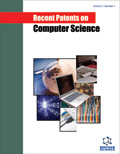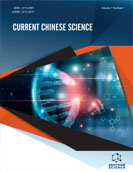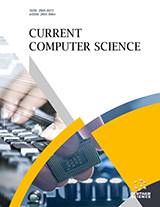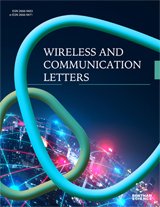Abstract
Background: The rapid improvement in technology enables an Electroencephalogram (EEG) to detect a diverse range of brain disorders easily. The design of sophisticated signal processing methods for an efficient analysis of the EEG signals is exceptionally essential. Raw EEG signal is contaminated by noise and artefacts that modify the spectral-spatial and temporal information of the signal and renders inaccurate clinical interpretation. Denoising of the signal is the first step to refine the signal quality and identify patient's mental state from the signal although it is not an easy task because of high dimensionality and complexity of EEG signal. The present study highlights three conditions of the brain namely stroke, brain death, and a healthy state. The primary concern is to detect the most abnormal conditions of the brain, i.e., an EEG with a critical stage.
Method: This paper introduces a neoteric technique for the analysis of EEG signals of the three conditions using filters such as Fuzzy filter and wavelet orthogonal filter to obtain highly accurate resultant signals. Further, the resultant filter is trained in Neural Network for predicting the brain abnormalities. The proposed system is found to be efficient in denoising the EEG waves.
Results: The result shows that the classification accuracy of multiclass EEG dataset achieved and the performance of ANN is high and it was found to be the best validation performance of ANN which is 0.2303.
Conclusion: This paper comprehensively describes the denoising of the EEG signals that will provide accuracy in the diagnosis of the EEG to detect brain disorders. The Fuzzy filter pre-processes the signals by considering the noisy signal by an ideal value in such a way that the desired metric (the filtered output) is reduced. The orthogonal wavelet filter produces a single scaling function and wavelet function. The EEG features are extracted from multiple-level decompositions of EEGs by DWT. Finally, the features are classified using Back propagation artificial neural network that categorizes the EEGs to make the diagnosis easier for the brain abnormalities.
Keywords: EEG, denoising, filter, brain abnormalities, artificial neural network, orthogonal wavelet.
Graphical Abstract
Recent Patents on Computer Science
Title:A Machine Learning Prediction Model for Automated Brain Abnormalities Detection
Volume: 11 Issue: 1
Author(s): Satyajit Anand*, Sandeep Jaiswal and Pradip Kumar Ghosh
Affiliation:
- Department of ECE, School of Engineering and Technology, Mody University of Science and Technology, Lakshmangarh,India
Keywords: EEG, denoising, filter, brain abnormalities, artificial neural network, orthogonal wavelet.
Abstract: Background: The rapid improvement in technology enables an Electroencephalogram (EEG) to detect a diverse range of brain disorders easily. The design of sophisticated signal processing methods for an efficient analysis of the EEG signals is exceptionally essential. Raw EEG signal is contaminated by noise and artefacts that modify the spectral-spatial and temporal information of the signal and renders inaccurate clinical interpretation. Denoising of the signal is the first step to refine the signal quality and identify patient's mental state from the signal although it is not an easy task because of high dimensionality and complexity of EEG signal. The present study highlights three conditions of the brain namely stroke, brain death, and a healthy state. The primary concern is to detect the most abnormal conditions of the brain, i.e., an EEG with a critical stage.
Method: This paper introduces a neoteric technique for the analysis of EEG signals of the three conditions using filters such as Fuzzy filter and wavelet orthogonal filter to obtain highly accurate resultant signals. Further, the resultant filter is trained in Neural Network for predicting the brain abnormalities. The proposed system is found to be efficient in denoising the EEG waves.
Results: The result shows that the classification accuracy of multiclass EEG dataset achieved and the performance of ANN is high and it was found to be the best validation performance of ANN which is 0.2303.
Conclusion: This paper comprehensively describes the denoising of the EEG signals that will provide accuracy in the diagnosis of the EEG to detect brain disorders. The Fuzzy filter pre-processes the signals by considering the noisy signal by an ideal value in such a way that the desired metric (the filtered output) is reduced. The orthogonal wavelet filter produces a single scaling function and wavelet function. The EEG features are extracted from multiple-level decompositions of EEGs by DWT. Finally, the features are classified using Back propagation artificial neural network that categorizes the EEGs to make the diagnosis easier for the brain abnormalities.
Export Options
About this article
Cite this article as:
Anand Satyajit*, Jaiswal Sandeep and Ghosh Kumar Pradip, A Machine Learning Prediction Model for Automated Brain Abnormalities Detection, Recent Patents on Computer Science 2018; 11 (1) . https://dx.doi.org/10.2174/2213275911666180719113759
| DOI https://dx.doi.org/10.2174/2213275911666180719113759 |
Print ISSN 2213-2759 |
| Publisher Name Bentham Science Publisher |
Online ISSN 1874-4796 |
 27
27 4
4Related Articles
-
The Role of Cnidaria in Drug Discovery. A Review on CNS Implications and New Perspectives
Recent Patents on CNS Drug Discovery (Discontinued) Differentiation of Non-Pharmacological from Pharmacological Dopamine Release in the Living Human Brain
Current Medical Imaging From Amino Acids to Proteins as Targets for Metal-based Drugs
Current Drug Metabolism GABAA Receptors in Normal Development and Seizures: Friends or Foes?
Current Neuropharmacology Biochemical and Therapeutic Effects of Antioxidants in the Treatment of Alzheimers Disease, Parkinsons Disease, and Amyotrophic Lateral Sclerosis
Current Drug Targets - CNS & Neurological Disorders In Silico Studies in Drug Research Against Neurodegenerative Diseases
Current Neuropharmacology The Role of Oxidative Stress and Anti-Oxidant Treatment in Platinum- Induced Peripheral Neurotoxicity
Current Cancer Drug Targets Serum DHEA-S, Testosterone and Cortisol Levels in Female Patients with Schizophrenia
Endocrine, Metabolic & Immune Disorders - Drug Targets The Beneficial Effect of Rice Bran Extract Against Rotenone-Induced Experimental Parkinson’s Disease in Rats
Current Molecular Pharmacology Cyclosporin and Organ Specific Toxicity: Clinical Aspects, Pharmacogenetics and Perspectives
Current Clinical Pharmacology High Temporal Resolution Neuroimaging of Attentional and Somatosensory-Motor Processing in the Human Brain
Current Medical Imaging Encephalopathy: A Vicious Cascade Following Forebrain Ischemia and Hypoxia
Central Nervous System Agents in Medicinal Chemistry Deciphering the Physiology Underlying the Rapid Clinical Effects of Perispinal Etanercept in Alzheimers Disease
Current Alzheimer Research The Discovery of Epidepride and Its Analogs as High-Affinity Radioligands for Imaging Extrastriatal Dopamine D2 Receptors in Human Brain
Current Pharmaceutical Design Molecular Chaperones as Rational Drug Targets for Parkinsons Disease Therapeutics
CNS & Neurological Disorders - Drug Targets Ultra-micronized Palmitoylethanolamide: An Efficacious Adjuvant Therapy for Parkinson’s Disease
CNS & Neurological Disorders - Drug Targets The Secretin/Pituitary Adenylate Cyclase-Activating Polypeptide/ Vasoactive Intestinal Polypeptide Superfamily in the Central Nervous System
Central Nervous System Agents in Medicinal Chemistry Microglial Activation with Reduction in Autophagy Limits White Matter Lesions and Improves Cognitive Defects During Cerebral Hypoperfusion
Current Neurovascular Research Clozapine and Olanzapine but not Risperidone Impair the Pre-Frontal Striatal System in relation to Egocentric Spatial Orientation in a Y-Maze
Current Neurovascular Research Proteomic Approaches Contributing to the Understanding of Neurodegenerative Diseases: Focus on Alzheimers Disease
Current Proteomics



















